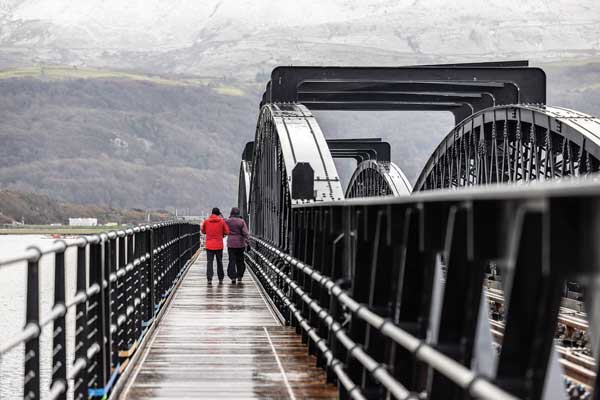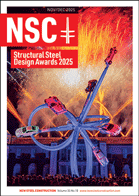SSDA Awards
MERIT – Barmouth Viaduct Metallic Spans Replacement, Wales
Part of the restoration of the Grade II* listed Barmouth Viaduct, five metallic spans have been replaced with new replica steelwork elements.
FACT FILE
Structural engineer: Tony Gee and Partners LLP
Main contractor: Alun Griffiths (Contractors) Ltd
Client: Network Rail
Carrying a single-track railway line over the Mawddach Estuary in North Wales, the 760m-long Barmouth Viaduct has now reopened following an extensive restoration programme.
The five northern metallic spans (the remainder of the viaduct is timber framed), which span the navigable river, have been meticulously replaced with new steelwork.
Because of the harsh estuarine environment, the metallic part of the historic viaduct was corroding and deteriorating to such an extent that a replacement was urgently needed.
Using the existing foundations, the new structure required a large number of bespoke steelwork details and complex connections (manufactured to look like Edwardian rivets) in order to replicate the original viaduct.
“The main challenge was the difficult access in the estuary and the very restricted area around the north abutment, which meant that the use of cranes was not possible,” explains Tony Gee and Partners Associate Director Thomas Ashworth.
“The lack of space precluded the use of launching and sliding a replacement bridge into place, and as a consequence, the project team developed the idea of bringing the new structure from the south, along the timber viaduct.”
The chosen construction methodology involved the replacement steel trusses being used to temporarily support the old trusses, while they were being demolished.
The demolition sequence and the installation of the new steelwork involved several stages of jacking, sliding, adjusting and connecting the new elements.
Stainless steel provided smooth sliding surfaces and all the steelwork was lifted and lowered to pontoons using bespoke gantry cranes, which were developed to run along the top of the new bridge during the steelwork installation programme. This method ensured no lifting operations were carried out beyond the footprint of the structure, and thereby avoiding unnecessary disruption to the marine environment.
“Using other materials (not steel) would have been too bulky and heavy,” adds Mr Ashworth. “Steelwork allowed us to make modifications to the trusses, the bolted connections for the gantry crane runway beam and the temporary crosshead beams.”
According to Network Rail, the renewal of the metallic viaduct was completed within the planned track blockade, which was a tribute to the careful planning that had been carried out.
By locating the construction compound to the south of the viaduct and timing the works for the autumn, any negative impact on Barmouth’s tourism industry was minimised.
Summing up, the judges say this new viaduct replicates an iconic listed structure which had deteriorated due to the harsh estuarine environment. The new superstructure was designed to fit within the existing structure enabling it to be moved into position using the existing railway, and to support the old as it was dismantled. An outstanding example of construction-led design.




